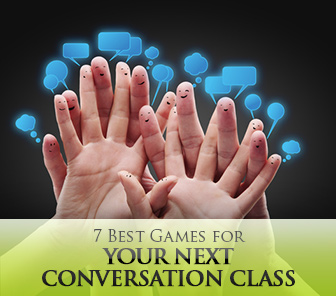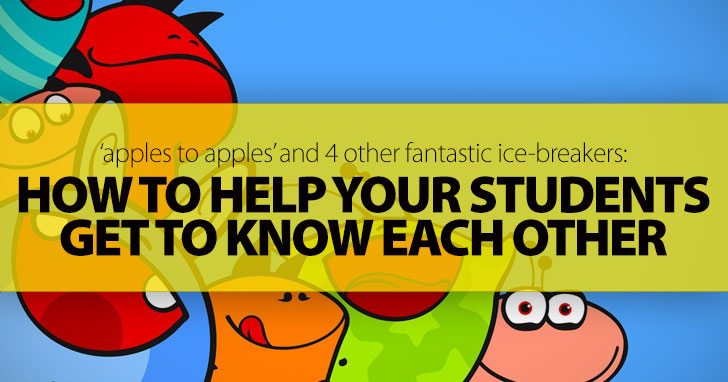7 Best Games for Your Next Conversation Class


For ESL students, classmates and friends are often family away from home, and the sooner and better your students can get to know each other, the more support and encouragement they will be able to give and receive as they pursue their language studies. Here are some get to know you activities that work well with newly formed classes as well as those who have already gotten to know each other to some degree. Try one or more and find out just how much you didn’t know about your ESL students.

Help your students get to know each other with this fun icebreaker activity. Prepare for the game by getting a large plastic beach ball and writing several ice breaker questions on it with a permanent marker. To play, arrange your students in a circle and toss the ball to someone. They catch it, read the question that is nearest their right thumb, and then answer it. They then toss the ball to another student who reads and then answers the question nearest their right thumb. Continue playing until everyone in class has at least one chance to answer a question.
You can also play this game with a class that already knows each other fairly well. Rather than answering the question right away, have several students predict what the catcher’s answer will be to the question. After three or four people have made predictions, have the catcher answer the question for himself and then toss the ball to another student.
This get to know you activity doubles as a vocabulary builder for your ESL students. Start by setting up a shadow tracing station in your classroom. Simply direct a bright bulb at a blank wall. Students work with a partner to trace each other’s profiles. One person stands in front of the light, and the other person traces their shadow on a piece of white paper. Students then cut out their profiles and paste them on a colored piece of paper. Once students have their profiles, have them look through a collection of old magazines to find pictures of things that interest them. They should glue their interest pictures inside their profile cut out, looking up any vocabulary words they do not know but will need to talk about their pictures. After the collages are finished, give each student a few minutes in front of the class to talk about the pictures in their collage. After the presentations, you can display the collages around your classroom.
A simple way for students to get to know each other and learn adjectives that describe people at the same time is to have them create acrostics from their names. Start by brainstorming with your class a large list of adjectives that might be used to describe people. Put these words up on the board (and if you have a daring class you might even want to have students act out some of the adjectives). Once your lists are complete, have each person write his full name vertically down the left side of a piece of paper. He must then choose an adjective that begins with each of the letters of his name that also describes him and write it next to the letters. For example, someone named Li might write “loving, intelligent”. Once the acrostics are complete, have students share their adjectives with the rest of the class. You might even invite your class to suggest other adjectives each person might have used to describe himself.
In this game, students will guess at information about their classmates based on objects that person shares with the class. As homework, each person should gather two or three objects that represent something about them. It might be something they love, something they hate, something that evokes a certain memory – anything is ok as long as that person can explain the connection between it and themselves. Students take turns showing their objects to the class. The class makes predictions about how that object relates to their classmate. After enough people have shared their guesses, have the person explain how the object really relates to them. Did anyone guess correctly?
This get to know you party game is designed for native speakers, but that doesn’t mean your ESL class won’t have a ball with it, too. A simple set of Apples to Apples cards costs as little as ten dollars, and you and your students will get hours of entertainment from them. Each person receives seven cards that have a characteristic of a person, place, or thing on them (the red apple cards). One person lays down a green apple card, which has the name of a person, place, thing, or event. Each player then chooses one of his characteristic cards that best represents the green apple card and gives it to the “judge” for that round (the one who laid down the green apple card). That person reads all the red apple cards and chooses the one he thinks is most fitting. His choice is based solely on his own preferences, and this is how your students will get to know each other. Whoever laid down the card he chose gets to keep that green apple card. Play continues around the circle until one player has earned five green apple cards or however many you choose to set as the winning number. If you like, you can leave the game at a learning center for students to play during free learning periods. Make sure to include a dictionary at the center so students can look up unfamiliar words.
These fun activities not only give students a chance to get to know each other, they also give ESL students an opportunity to learn new vocabulary and practice their speaking skills. Whether your class is a bunch of old friends or they are just meeting each other for the first time, these activities can be valuable tools for building a more tightly knit class and supportive atmosphere in the classroom and outside it.